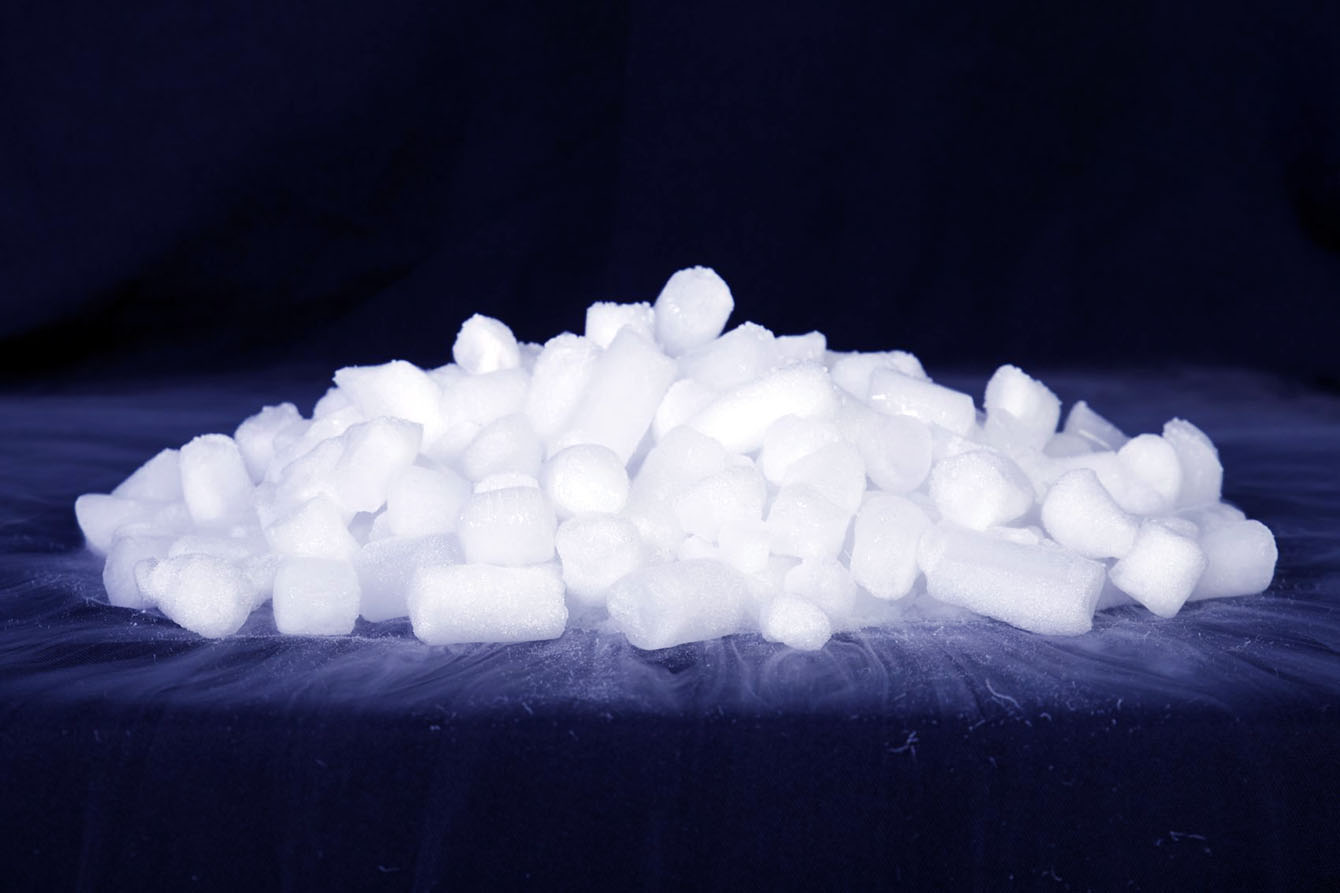Transport of frozen goods
Due to an extremely low temperature it is required to be very careful when packing and use protective measures in order to avoid frostbite. It is recommended to avoid contact with skin.
Packages must never be closed hermetically as the package needs to release the sublimed carbon dioxide. Increased level of carbon dioxide in the hermetically closed package causes a pressure increase which can lead to breakage of the package. Often it pops, spewing the contents of the package.
A package containing dry ice needs a special marking for storing and transport because the increasing level of carbon dioxide coming from the packages increases the level of carbon dioxide concentration in loading rooms and storage areas. An extreme concentration of carbon dioxide in the air (>10%) is dangerous and can cause blackout or even death.
When packing for transport it is reasonable to use a polystyrene thermal package with wall thickness of at least 5cm. Thickness is needed to ensure sufficient thermo-isolation and sustain the strength of the package structure. Polystyrene packages normally come with an outer cardboard package, which offers an extra layer of isolation and protection. Additionally, it is easier to put markings and other necessary documentation on the cardboard.
The quantity of dry ice depends the duration of transport. Normally 1% of dry ice sublimes within an hour. The length of the procedure depends on many factors, such as the temperature outside, the quantity of frozen goods, the space in the package and air pressure. For example, in airplanes the air pressure is often lower, therefore dry ice evaporates faster. In transportation there is always a chance of delay or holdup, therefore it is highly recommended to plan ahead with sufficient reserves.
For optimal and safe transport of goods always remember to:
- Use personal safety measures (e.g. gloves);
- Do not close packages hermetically, this includes packages containing dry ice;
- Goods transported in a package containing dry ice should be frozen before transport;
- During a transport cycle that is longer than 72h there might be a need to add more dry ice while in transport

